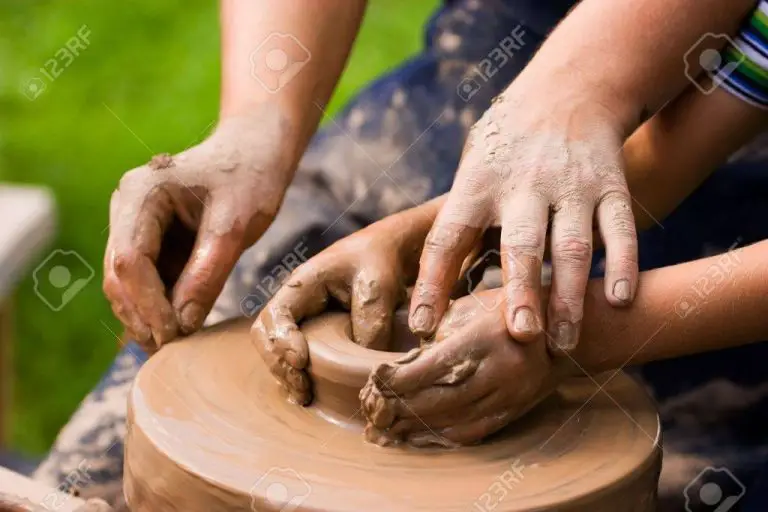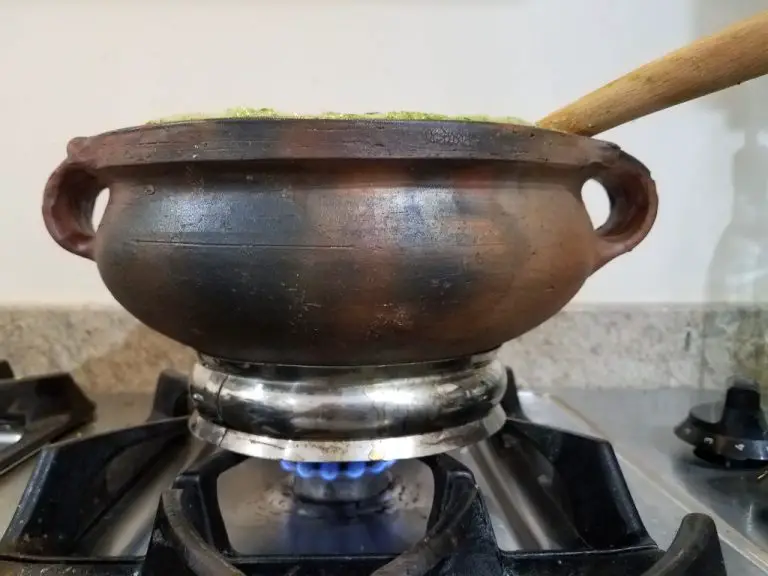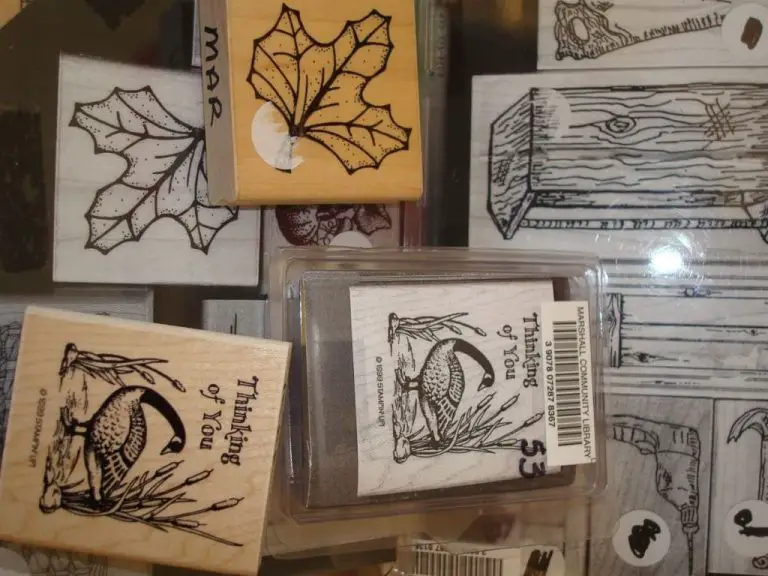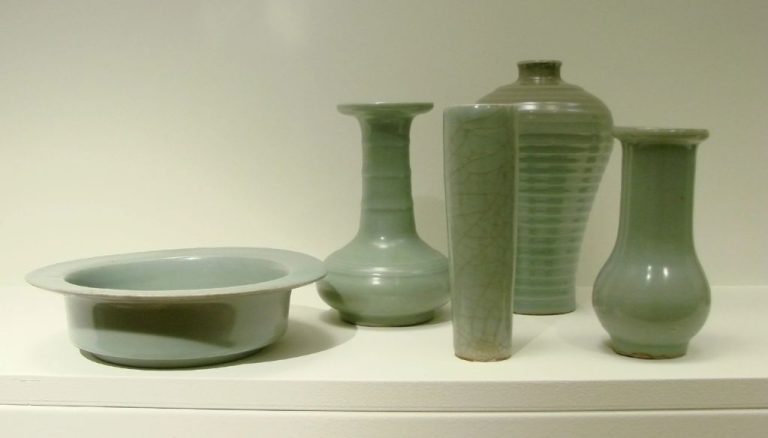Can You Put Food On Air Dry Clay?
Air dry clay, also known as modeling clay, is a type of clay that can dry and harden at room temperature. Unlike other clays that require firing at high temperatures, air dry clay will solidify and become permanently hard over time when exposed to air.
Air dry clay is made from materials like cellulose, binders, and hardeners that allow it to stiffen as the water evaporates. It often has a smooth, doughy texture similar to Play-Doh that makes it easy to shape and sculpt. Most air dry clays retain a bit of flexibility even when fully hardened.
Air dry clay is popular for arts and crafts projects, especially with children, because it does not require any special tools or equipment to use. It is also reusable if kept moist and pliable in an airtight container. These properties make air dry clay an accessible, user-friendly modeling material for everything from decorative pieces to functional clay food displays.
Reasons People Might Want to Put Food on Clay
One of the main reasons people choose to put food on clay is for decorative food displays and centerpieces. Using clay as a base for food arrangements can allow you to create beautiful and unique edible centerpieces for special occasions and holidays. For example, grapes, slices of citrus fruits, berries, and other colorful foods can be affixed to a clay base to form floral-like designs for table centerpieces. Pieces of clay can also be molded into creative shapes like leaves, vines, trees, etc. to use as decorative bases for displaying bite-sized foods at parties and events. Clay absorbs moisture and helps preserve the fresh appearance of fruits and veggies when used for edible arrangements. The neutral tones and matte finish of air dry clay also help highlight and complement vibrant foods in a centerpiece. With a bit of creativity, clay makes an ideal material for fashioning one-of-a-kind edible centerpieces for showers, birthdays, weddings, and any special gathering.
Challenges and Considerations with Putting Food on Clay
When deciding whether to place food items on clay, there are some important factors to consider.
One challenge is that clay is porous. This means liquids and moisture can seep into the clay, causing staining, discoloration, and making the clay difficult to clean. Oil and juice from foods may soak into unglazed clay and leave permanent stains.
Another consideration is cleanliness. Raw clay can harbor bacteria, so care needs to be taken if clay projects with food will be handled and eaten from. Proper drying and baking can help sanitize clay, but contaminants from food could still be an issue. Glazing provides a non-porous surface, but clay shouldn’t be considered food-safe unless the glaze formulation specifically indicates it is.
Overall, exercise caution when placing moist or liquid-based foods on raw, unglazed clay. Opt for solid foods over wet ingredients when possible. And avoid serving food directly on clay that hasn’t been properly sanitized and glazed.
Best Practices for Using Food with Clay
When putting food items on clay, it’s important to follow some best practices to ensure your creations last and are safe to display. Two key things to consider are sealants and varnishes.
Applying a sealant or varnish is highly recommended when using food on clay. Sealants create a protective barrier between the clay and the food, preventing staining, softening, and other damage to the clay. Acrylic sprays and polyurethane are common sealants used for clay crafts. Apply 2-3 thin coats of sealant, allowing it to fully dry between coats. This seals the clay prior to adding any food.
Once the food elements are attached to the clay, another round of sealant or varnish can be applied to seal the entire piece. This protects the food from attracting dirt or bugs, and prevents odors from developing. It also creates a nice finished look. Again, let the sealant fully cure as per the manufacturer’s directions before handling or displaying the piece.
Choosing a high-quality sealant made for arts and crafts, and properly sealing before and after adding food, allows you to create stunning and lasting clay food artworks.
Types of Food Best Suited for Clay
When choosing foods to display with clay, it’s best to avoid perishable items that could spoil or rot. Focus instead on non-perishable, dry foods that will maintain their shape, color, and texture.
Some good options include:
- Dried beans, pasta, rice
- Nuts
- Spices and herbs
- Candy/sweets
- Cereal or granola
- Crackers
- Chips
- Pretzels
- Dried fruits
These types of dry, non-perishable foods will hold their shape when pressed gently into clay. Their colors and textures will remain intact for a long time, allowing the clay scene to be displayed or preserved. Avoid fresh foods like fruits, vegetables, or cheese that may rot or decompose.
Creative Techniques and Ideas
Clay provides a fun, creative canvas for making food designs. Here are some techniques and ideas to try:
Imprinting
Press actual food items into clay to imprint their shape and texture. Things like cookie cutters, candy molds, or even vegetables can create cool imprints. Try pressing a waffle iron into clay for a fun breakfast design.
Texturing
Use various household objects to add texture to clay “food.” Try pressing in forks, graters, mesh screens, or even bubble wrap to make patterns. Use clay sculpting tools, like ruffled cutters, to imprint designs.
Get creative with different textures – try making “sprinkles” by pressing the eraser end of a pencil into clay. Use a paintbrush handle to make imprints that look like wood grain.
Recipes and Tutorials
Here are some fun and creative recipes and tutorials for using food with clay:
Decorated Cookies
Cookies are a fun canvas for clay decorations. Roll out air dry clay very thin and cut into shapes like flowers, animals, letters etc. Brush the tops of cooled cookies lightly with water then gently press the clay shapes onto the cookies. Let dry completely before serving.
You can also roll thin ropes of clay and make decorative borders around cookie edges. Or use a small ball of clay as a stamp, pressing it into the top of the cookie then removing it to leave an imprint.
Fruit Bowls
Make a beautiful fruit bowl out of clay for displaying fresh fruits on a counter or table. Roll coils and attach into the shape of a bowl, smoothing the seams with your fingers. Use acrylic paints to add color and patterns when dry.
You can also press fresh fruits like oranges, apples or pears lightly into clay to make imprints on the outside of the bowl before baking. For a glossy finish, brush a food-safe glaze on the outside and inside of the dried clay bowl.
Storing and Displaying Clay Food Projects
Clay projects using food need special consideration when it comes to storage and display. Since they contain real food items like fruits, vegetables, breads and pastries, they are susceptible to mold, decay, and attracting pests. To best protect your clay food projects:
Avoid storing or displaying them anywhere with excess moisture, dirt or humidity. The clay can absorb moisture which will lead to quicker deterioration of the food items. Keep them in a clean, dry, indoor space. A garage, basement or outdoor shed that is prone to moisture could ruin your project.
Avoid direct sunlight, which will also speed up decay of the food items. Find a spot out of direct light to store your clay food creations.
Consider sealing the food items by brushing a clear acrylic spray over them. This adds a protective coating that helps keep out moisture and prevents fading. Reapply every so often if needed.
Place your projects in clear boxes or under glass domes to keep air circulating and prevent dust buildup. Check regularly for any signs of mold or rotting and remove food if needed. With careful storage and display, your clay food artwork can last for many years.
Safety Tips
When working with clay and food, there are some important safety considerations to keep in mind:
Supervise children closely. Air dry clay is non-toxic, but eating clay should always be avoided. Ingesting clay can cause choking hazards or intestinal blockages, especially for young children.
Wash hands thoroughly after handling clay. Some clays can dry out skin and get lodged under fingernails.
Avoid cross-contamination. Keep clay work surfaces separate from food prep areas. Do not use the same utensils for clay and food without washing first.
Display clay food creations out of reach. Place fragile clay food items up high or under glass to prevent breakage. Make sure small objects are not accessible to babies, toddlers, and pets.
Check clay fully before storing. Let all clay pieces dry completely, checking for damp spots that could grow mold.
While painted clay is safe once dry, avoid using food items or utensils to apply paint. Use designated clay painting supplies instead.
Conclusion
Decorating air dry clay with food can be a fun and creative activity for kids and adults. It allows you to make realistic-looking food items out of clay. However, there are some drawbacks to consider. The main challenges are ensuring the food items stick to the clay properly and don’t rot or attract bugs. Proper sealing and storage is important.
Overall, using food on clay can result in whimsical decorative items, fun kids’ projects, and unique DIY gifts. With some care and planning, the results can be quite impressive. Just be sure to follow basic food safety guidelines. While not entirely practical for long-term use, clay food can provide an outlet for creativity and imagination.





